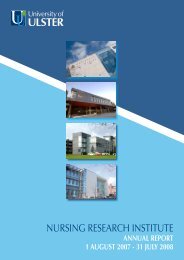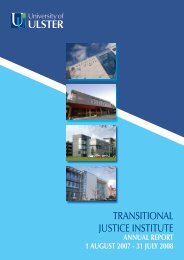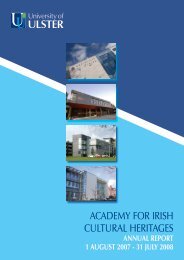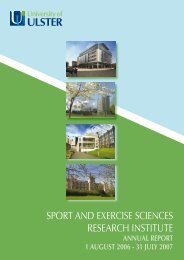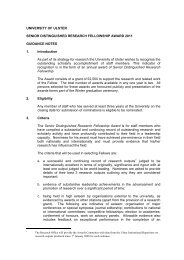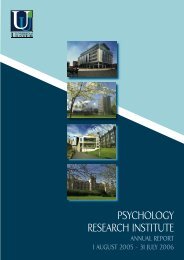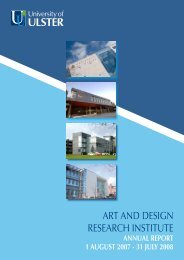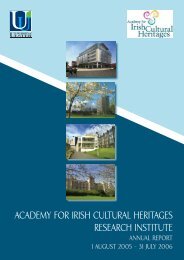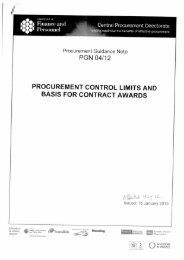environmental sciences research institute - University of Ulster
environmental sciences research institute - University of Ulster
environmental sciences research institute - University of Ulster
Create successful ePaper yourself
Turn your PDF publications into a flip-book with our unique Google optimized e-Paper software.
A comparison <strong>of</strong> the sediment toxicity tests results with the concentrations <strong>of</strong> the chemicals showed that only the heavy<br />
metals are a risk to the animals that live in and around the sediment in lakes and not the OCs, PCBs or PAHs. This was<br />
an unexpected finding, given the widespread concern about POPs. Further analysis showed that it is lead and arsenic<br />
amongst the heavy metals that pose the greatest risk.<br />
This work also produced a chemical risk index for DEFRA and others to use to identify the lakes at risk from heavy<br />
metals deposited from the atmosphere and a map <strong>of</strong> the general risk is shown below.<br />
Figure 3. Three sub-regions <strong>of</strong> high, medium and low risk <strong>of</strong> biological effects in lake sediment due to the deposition <strong>of</strong> heavy metals<br />
from the atmosphere. The lakes are identified by a lake number.<br />
Not all lakes in the high risk region would be expected to have toxic sediments as a result <strong>of</strong> the deposition <strong>of</strong> metals from<br />
the atmosphere. This happens because lakes with a high accumulation rate <strong>of</strong> sediment will dilute the metals deposited<br />
from the atmosphere and so the concentrations would not be as high and the sediment not as toxic as expected. On<br />
the other hand, some lakes in the medium risk region would have toxic sediments, if they had low sediment accumulation<br />
rates; in this case, the metals would not be diluted much by the sediment and so the concentrations would be higher and<br />
the sediment more toxic than expected.<br />
This investigation is a good example <strong>of</strong> where sponsored <strong>research</strong> and <strong>research</strong> completed as part <strong>of</strong> a PhD can come<br />
together and make the overall contribution greater than the sum <strong>of</strong> the parts.<br />
<br />
15



